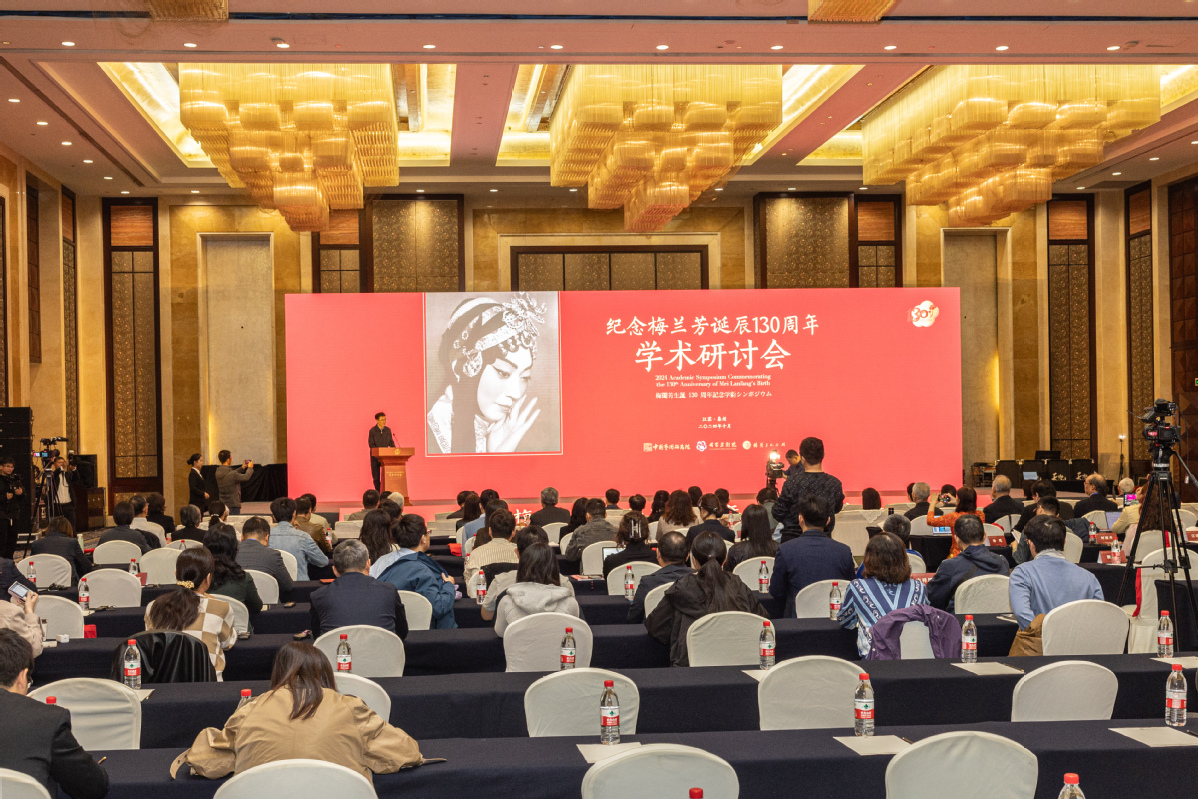

The Mei Lanfang 130th Anniversary Academic Symposium commenced in Taizhou, Jiangsu province, on Oct 22, bringing together prominent figures and scholars from the Chinese National Academy of Arts, the China National Peking Opera Company and the Mei Lanfang Memorial Museum to honor Mei's profound contributions to Peking Opera.
With his ancestral home in Taizhou, Mei was born in Beijing in 1894. He specialized in performing nandan roles — men who play female characters — a practice forged in feudal times when women were forbidden to take to the stage.
In his opening remarks, Zhou Qingfu, president of the Chinese National Academy of Arts, highlighted Mei as a beacon of 20th-century Chinese theater who garnered admiration worldwide. Mei dedicated his life to advancing the Peking Opera art form by innovating it while remaining true to its core. Zhou emphasized that the symposium serves to celebrate Mei's artistic legacy and as an opportunity to inspire future generations to carry forward the spirit of Mei and his peers.
Yuan Huiqin, artistic director of the China National Peking Opera Company, lauded Mei's pioneering role in introducing Peking Opera to global audiences. She portrayed him as a preserver and innovator of Chinese cultural heritage who strengthened cultural exchange, making Peking Opera a radiant gem of Eastern art on the world stage. Mei's dedication, she noted, fused artistry and character into an enduring symbol of traditional Chinese culture.
The two-day symposium featured keynote speeches and forums, inviting scholars to discuss topics that delved into Mei's influence on contemporary Chinese theater, the principles and future of Peking Opera's preservation, the evolution of Peking Opera styles, and comparative studies of Mei and two other Peking Opera masters, Zhou Xinfang (1895-1975) and Cheng Yanqiu (1904-58).
Discussions centered on Mei's contributions to shaping a Chinese theatrical performance system, emphasizing his role as an innovator who both modernized and preserved the art form's heritage. By balancing innovation with tradition, Mei set the groundwork for future artists to develop the genre while maintaining its origins. Scholars explored the importance of continuing this balance to allow for the art's significant growth in modern China.